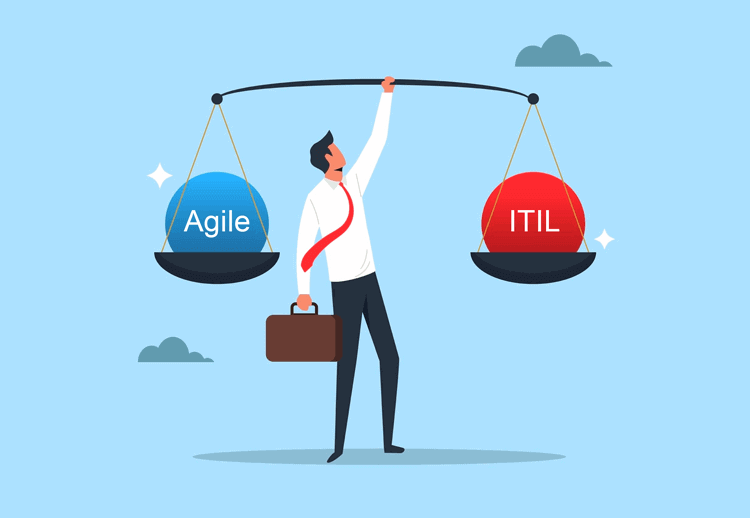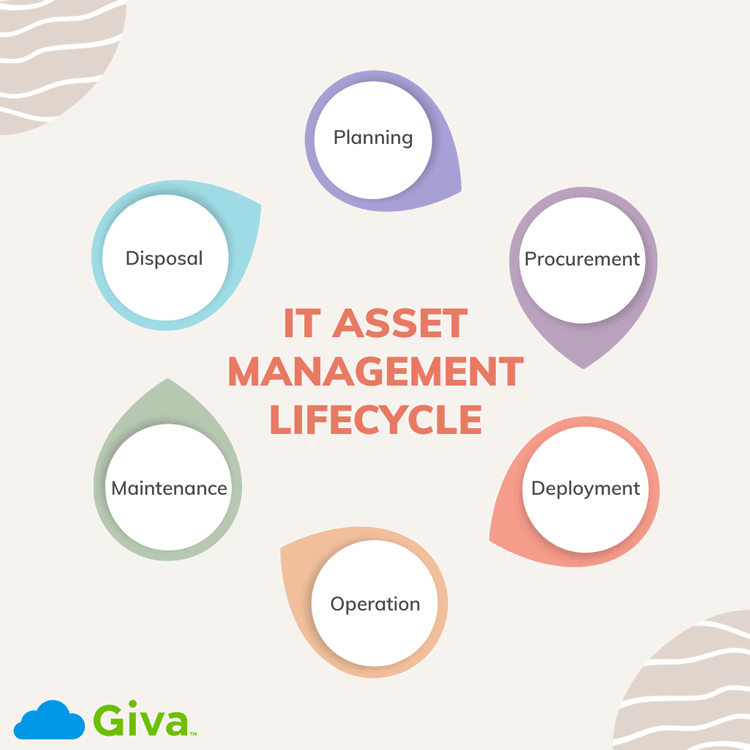Agile vs. ITIL: How Do They Fit Together? Or Do They?
Developing and implementing technology solutions is a complicated process. Over the years, a wide range of best practice guidelines and frameworks have been created to make this easier and more cost and time-effective, such as Agile and ITIL®.
Agile Service Management (ASM) emerged as an iterative, faster-paced approach to software development. When application release cycles are shorter and focused on features and how a team works together, silos are broken down, and work progresses more quickly.
On the other hand, ITIL (Information Technology Infrastructure Library) is a best-practice framework or set of best practices that guides IT Service Management (ITSM). IT professionals and leaders can earn qualifications in ITIL, giving them more knowledge and skills to do their work more effectively.
In this article, we answer the question whether ITIL and Agile work well together and how this could impact ITSM teams, departments, and software vendors.

What is Agile Methodology?
Agile is an iterative software development process. According to the Agile Alliance, "Agile is the ability to create and respond to change. It is a way of dealing with, and ultimately succeeding in an uncertain and turbulent environment."
In IT and IT Service Management (ITSM) terms, Agile is manifested as a series of software development frameworks, such as Scrum, Extreme Programming, or Feature-Driven Development (FDD).
Beyond that, Agile is an umbrella term for a way to practice software development and IT implementation. It encompasses "pair programming, test-driven development, stand-ups, planning sessions, and sprints."
Compared to other methods, "One thing that separates Agile from other approaches to software development is the focus on the people doing the work and how they work together. Solutions evolve through collaboration between self-organizing cross-functional teams utilizing the appropriate practices for their context."
Since the concept was created, Agile development and the principles behind it have become commonplace across IT and ITSM teams, software companies (SaaS), and the technology sector.
Here's an article on how roles are defined within Agile principles.
What is ITIL?
ITIL (Information Technology Infrastructure Library), now onto Version 4, is a series of best practice guidelines supported by a series of qualifications.
ITIL first emerged after the British government set about trying to understand why IT costs were so high and why IT projects rarely worked as expected. Out of the chaos, the UK government's centralized IT department published GITIM (Government Information Technology Infrastructure Management), a massive 30-volume set of best practice guidelines.
And so, ITIL was born. ITIL has evolved considerably over the last few decades.
In the present ITIL v4, the qualifications and guidelines are managed and delivered by Axelos, part of PeopleCert, a global training, learning, testing, and certification company.
Axelos describes ITIL 4 as a "certification scheme [that] can be adapted to the learning requirements of the individual and the organization. It uses a modular, tiered approach to allow you to develop a comprehensive view of service management or to focus on specific areas of knowledge."
Now, let's see how these two sets of guidelines and frameworks compare and contrast, and whether Agile and ITIL can work together.
Agile vs. ITIL
In comparing Agile vs. ITIL generally:
- Agile methodology is a specific way to deliver projects and develop software. It's a series of iterative methodologies and approaches that product managers and software engineers can use to improve the product development lifecycle. It's often mistakenly thought that "becoming Agile" opens the door to a chaotic approach. But it doesn't. Agile is an extremely structured approach to software development.
- On the other hand, ITIL is a series of best practice guidelines specifically for ITSM. Software companies can use these guidelines in order to make their processes and operating practices more streamlined, efficient, and organized.
With that in mind, Agile and ITIL overlap in many ways. There's no reason the two need to be viewed in competition with each other. They can work together for the benefit of IT teams, ITSM, businesses, organizations, and customers/end-users.
On a high-level, ITSM teams that want to integrate Agile and ITIL can do so without compromising either approach or operational efficiency. Yes, there are some differences, and when there are conflicting methodologies, it would be up to IT leaders to decide the best way forward for their organization and use case.
Now, let's look at how they compare with real examples:
-
A Change Request in ITIL goes something like this:
- With the launch of ITIL 4, "change requests" now fall under the category of Change Enablement.
- Because of this, DevOps practices play more of a role in Change Enablement.
- So do dependencies, which means that "All personnel [must] follow the cardinal rule that nothing can change in the live environment without an approved Request for Change (RFC). (Change enablement) actively supports the IT department's goal to maximize the number of 'Standard' changes."
We've even put together this handy ITIL Request for Change (RFC) template/checklist, so you can implement an RFC following ITIL guidelines.
-
An Agile Change Request is somewhat different, in that, there is not a set format and structure for requesting changes in the same way as ITIL.
Compared to ITIL, that might sound chaotic. However, one of the 12 Agile principles is to "Welcome changing requirements, even in late development."
This means "Good programmers have the ability to make changes rapidly, frequently, and on short notice. Waiting to design a new system with improvements that could be made now is inefficient and a waste of time. The ability to conceive and implement changes is critical in agile software development."
Any number of people involved in agile software development could request a change. Such as, other engineers on the team, operational leaders, product managers, clients, customers, and end-users, e.g., reporting a bug.
It doesn't mean every single change or new feature needs to be developed or implemented. But, agile development, by its very nature, is more adaptable and fluid than ITIL.
To avoid chaos, the best way to handle numerous requests using agile methodologies is to:
- Triage them into your project management tool (PM)
- Check whether the request is already aligned with your product development roadmap. If so, then you can confirm the request will be implemented and a timescale for that
- If not, then assess whether it's an important or useful change to make, weighing the request against product and operational goals. Bug reports almost always are, as this isn't a change as such, but merely alerting you to the fact that something's broken
- And then, either assign the change request to a developer on the team or decline it and provide reasons whenever necessary
As you can see, even though Agile welcomes Change Requests more fluidly than ITIL, the two approaches don't compete as much as you might expect.
Now, the question is, given the overlaps and competing areas, can they work together?
Joining the Two: Agile and ITIL Working Together
Agile and ITIL can work well together. Despite both concepts emerging from different times and places and being applied in ITSM and software development in different ways, there are synergies between Agile and ITIL.
From a high-level perspective, Agile and ITIL fit well together:
- ITIL serves as the foundational operational principle for implementing ITSM. This creates a framework that can become an operational strategy.
- Within that operational strategy are service (or software) design, development, and operational life cycle changes (such as new feature releases and product updates). Think of Agile as another layer for how services are delivered and managed within the ITSM team.
Key Takeaways: What Are the Benefits of Combining Agile and ITIL?
Integrating ITIL and Agile principles is a smart operational move for ITSM teams and IT leaders.
Combining the two approaches will save time and money when new products are being developed, or existing infrastructure is being overhauled or updated. Streamlined practices improve IT systems, software, and how services are implemented. In turn, this benefits customers, stakeholders, and organizations.
Need help and the right tools to implement ITIL and Agile practices?
Find out more about Giva's SaaS solutions. Giva offers a 30-day free ITSM software trial, so you can get hands-on experience: Demo Giva today!





